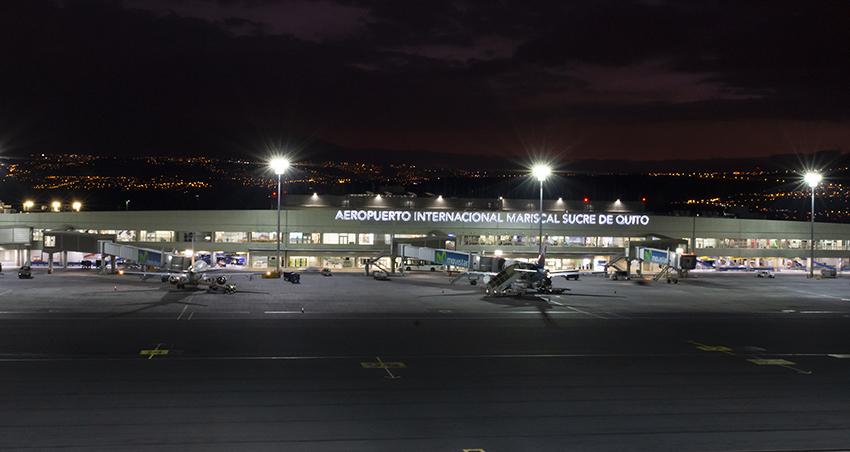QUITO AIRPORT IS THE FIRST IN ECUADOR TO BE CERTIFIED FOR ILS CATEGORY II OPERATIONS IN LOW VISIBILITY

This system helps to reduce cancellations, delays or diversions due to fog, increasing capacity at the airport to high international safety standards.
Since 2013, the Civil Aviation Authority (DGAC) has worked with Corporación Quiport to implement air navigation aids. To this end, equipment and systems have been installed such as the ILS (Instrumental Landing System), RVR (Runway Visual Range) and runway centerline lighting, all to increase the operational availability of the capital’s airport in foggy or low visibility conditions. These measures have led to Quito Airport becoming the first in Ecuador to be certified in ILS Category II.
The ILS is an approach and landing aid, which is used globally to guide aircraft with precision during their approach to the runway and, in some cases, along it. This system has 3 categories of operation and is established by the International Civil Aviation Organization (ICAO).
At Quito Airport, runway 36 currently has Category II precision approach and runway 18 has Category I precision approach. Because of this, the Civil Aviation Authority has certified the approach procedures and the Quito International Airport Aerodrome Manual and has authorized operations in adverse weather conditions (severe fog).
The Civil Aviation Authority states that Category II approaches allow aircraft to land at a decision altitude of 100 feet (30.48 meters) and visibility of just 1,200 feet (350 meters). This benefits passengers and airlines by preventing delays, diversions or cancellations due to fog. “CAT II guarantees that Mariscal Sucre Airport has a first-rate infrastructure, placing it at the forefront of international airports” says Anyelo Acosta, Director General of Civil Aviation.
Andrew O´Brian, President and CEO of Corporación Quiport, indicates “to be pleased to have ILS CAT II at Mariscal Sucre Airport, the first airport in the country and one of the first in Latin America to achieve this. This means 99% effectiveness and a high level of safety at the airport, a goal we have had since 2013 ”. He adds that in order to comply with all the technical requirements of this certification, intense work has been carried out with the technicians of Quiport and DGAC; contributing to the development of air transport in Ecuador and making the airport a platform for quality at a national and international level.

Lastly, Pablo Galindo, Undersecretary of Air Transport at the Ministry of Transport and Public Works, says that the certification is a clear and strong signal that will attract other airlines to Ecuador. He emphasizes that the certification is the result of joint work by the private company and the public sector who have become strategic partners for tourism investment and connectivity in Ecuador.
